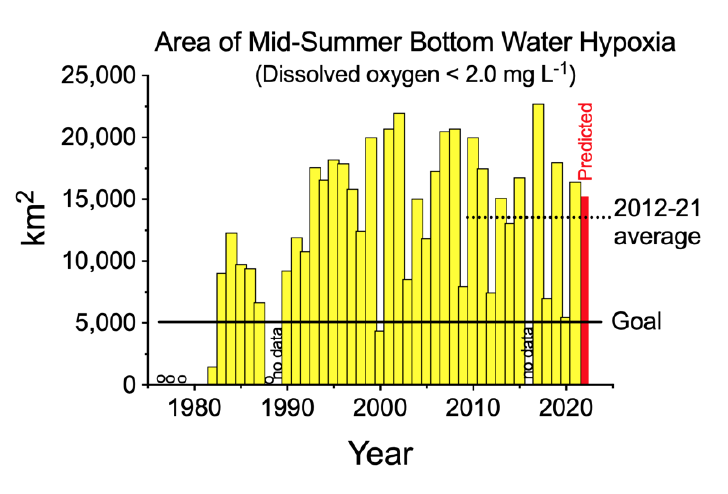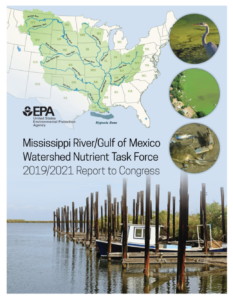Louisiana State University’s Department of Oceanography and Coastal Services has released their annual “dead zone” prediction: It is expected to be the 20th largest since systematic measurements began in 1985.
This annual forecast — produced by Drs. R. Eugene Turner and Nancy N. Rabalais, former GCOOS Board Member — predicts the size of the hypoxic, or low oxygen, zone that forms in the bottom waters of the northern Gulf of Mexico continental shelf each spring/summer near the outflow of the Mississippi River.
Nutrients from the Mississippi River watershed, particularly nitrogen, fertilize the Gulf’s surface waters to create excessive amounts of algal biomass that sink to the bottom where decomposition leads to oxygen depletion. The low oxygen conditions in the Gulf’s most productive waters stresses organisms and may even cause their deaths, threatening living resources. Various models use Mississippi’s May nitrogen load as the main driving force to predict how large the zone will be in late July.
- The predicted size this year? 15,233 square km (5,881 square miles) of the bottom of the continental shelf off Louisiana and Texas. That’s about the size of Connecticut (14,357 square km) and 111% of the 1985-2021 average of 13,791 square km.
- Read the full forecast








 what is being done about it? The EPA’s Mississippi River/Gulf of Mexico Hypoxia Task Force describes the progress made toward attaining the goals set by the Gulf Hypoxia Action Plan 2008 in their most recent report to Congress.
what is being done about it? The EPA’s Mississippi River/Gulf of Mexico Hypoxia Task Force describes the progress made toward attaining the goals set by the Gulf Hypoxia Action Plan 2008 in their most recent report to Congress.







